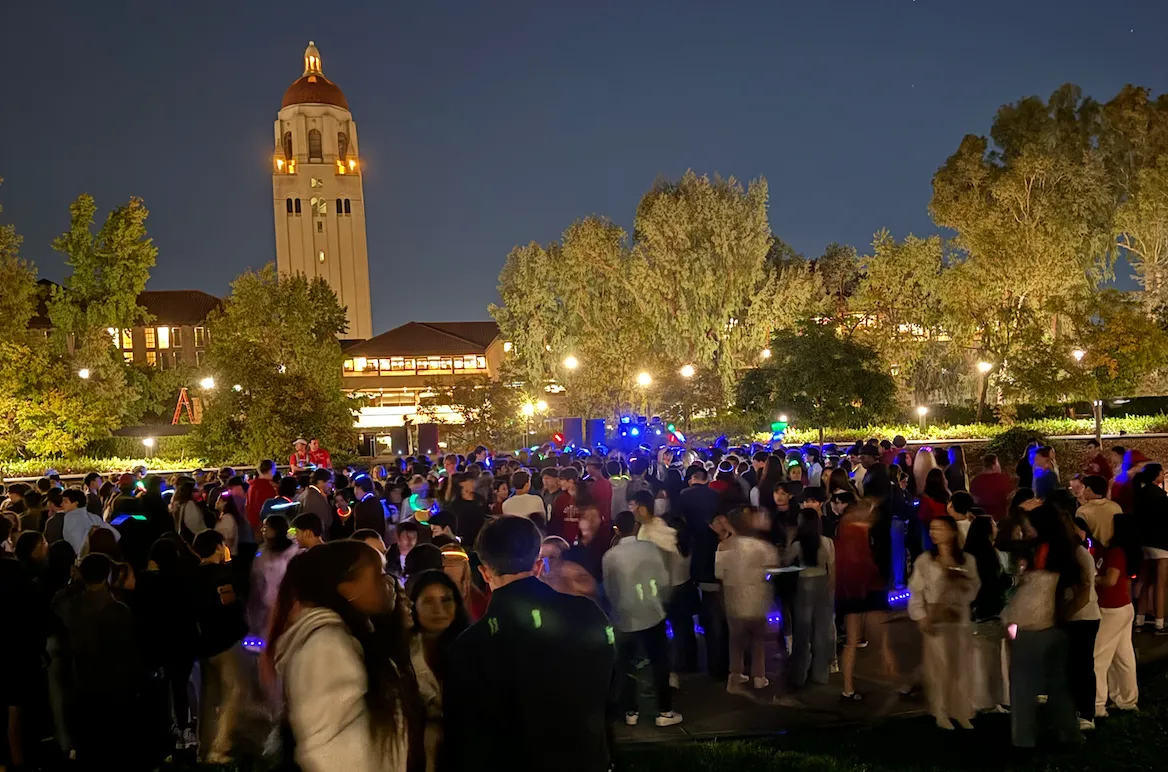Table of Contents
During every winter and spring quarter, Christian students at Stanford observe the Lenten season, commemorating the forty-days in which our Lord and Savior, Jesus Christ, fasted in the desert. Lent culminates in Holy Week, which is comprised of five of the Holiest days of the year: Palm Sunday, Holy Thursday, Good Friday, and finally, Holy Saturday and Easter Sunday. Yet, you would hardly know it’s a Christian Holy Week.... Stanford offers dining accommodations for everyone from Muslims, to Jews, Hindus, and Buddhists; the one group conveniently missing from Stanford’s website is Christians. We get no mention of Lent, Holy Week, or any of the dietary restrictions that go along with it.
For Christians, who, despite rapid secularization among younger generations, remain 24% of Stanford students, Holy Week and the Lenten season are the most sacred times of the year. The fasting and requirements to abstain from meat on each Friday of Lent, Ash Wednesday, and Good Friday are a critical part of the Christian preparation for Easter.
Despite the solemnity of Lent’s penitential season, and Christians making up a majority of religious students, the Stanford administration completely ignores the needs and preferences of Christian students on campus. Meanwhile, students of other religions receive significant dining accommodations. The exclusion of Christian representation from the student dining experience highlights just one example of the anti-Christian bias taking place on campus.
Stanford celebrates Ramadan for an entire month. The administration and R&DE Stanford Dining assists Stanford’s Muslim students, providing a month of Suhoor boxes (pre-dawn meals) for fasting preparation, Iftar (after-sunset) fast-breaking meals at certain dining halls, and a special Eid al-Fitr (the holiday that marking the end of Ramadan) celebration at Arrillaga Dining. On R&DE’s website, the eatWell initiative’s website states, “R&DE Stanford Dining offers a variety of food options to accommodate the dietary needs of Stanford’s Muslim community.” Similarly, Stanford R&DE provides the university’s Jewish students with a Glatt-kosher dining experience at Florence Moore dining seven days a week, and R&DE sponsors other religious-affiliated celebrations like Diwali and Lunar New Year.
Stanford’s Christian community, on the other hand, has absolutely no representation in the University’s dining experience. Unlike other faiths on campus, when Christian students are called to fast or alter their diets in accordance with religious law, Stanford R&DE is nowhere to be found. This past Lenten season, the only reliable source of alternate protein for Christian students abstaining from meat was a fish sandwich from TAP. On Easter Sunday, the holiest day of the year, there was not a single university-sponsored celebration for Christian students at any dining hall. In fact, a simple Google search shows that the last mention of an Easter celebration in a Stanford dining hall is from 2011.
The abundance of dining hall advertisements for Ramadan, Passover, Diwali, and other various religious meals in the dining halls might make you think that Christians are simply a minority on Stanford’s campus. However, according to the official 2022 Marriage Pact report, of the 6,100 students who filled out the survey, nearly 24% celebrate Easter, as well as Lent, Holy Week, and other Christian holidays. On the contrary, Muslim, Jewish, and Hindu students are 3%, 5%, and 5% of campus, respectively. Based on this report, the number of Christian students is nearly double that of the next three largest religions, combined. Despite this, Christian students are still not given the dining accommodations and respect of other faiths.
Why is this? Over the past several decades of religious decline in the United States, acknowledging Christianity has become taboo in public. Under the guise of “diversity, equity, and inclusion,” Stanford’s secular administration has attempted to drown out the voices of traditional Christians. Both previous and current university administrators, particularly Persis Drell and Mona Hicks, consistently displayed explicit opposition towards Christian virtues, like humility and chastity. Similarly, rather than allocating resources to celebrate the Resurrection of Jesus Christ on Easter Sunday, R&DE chooses to flood Arillaga dining hall with rainbow cookies. Although the administration claims to champion inclusion, it is clear that there is no room for those who embrace traditional Christian virtues.
While I hope this a wakeup call to university administrators, Stanford has a history of ignoring anti-Christian bias on campus. This year, graduating seniors have to participate in a morning-long commencement ceremony on a Sunday. For Christian students, scheduling decisions like this make it incredibly difficult to attend Church. At the same time, administrators vehemently apologize to students of other religions for similar scheduling conflicts.
As we continue to be made aware of examples of Christian exclusion at elite universities, it is clear that the implicit notion of Christian privilege portrayed by our nation’s largest institutions and media outlets is only a myth. However, despite constant hypocrisy towards Stanford’s Christian students—even in a place as seemingly harmless as a dining hall—and the anti-Christian activities endorsed by the University, the Faith will continue to thrive. Just as the Church zealously thrived under the oppression of Diocletian and rise of Constantine, so too will the Faith persevere in the secular wasteland of Stanford University.








